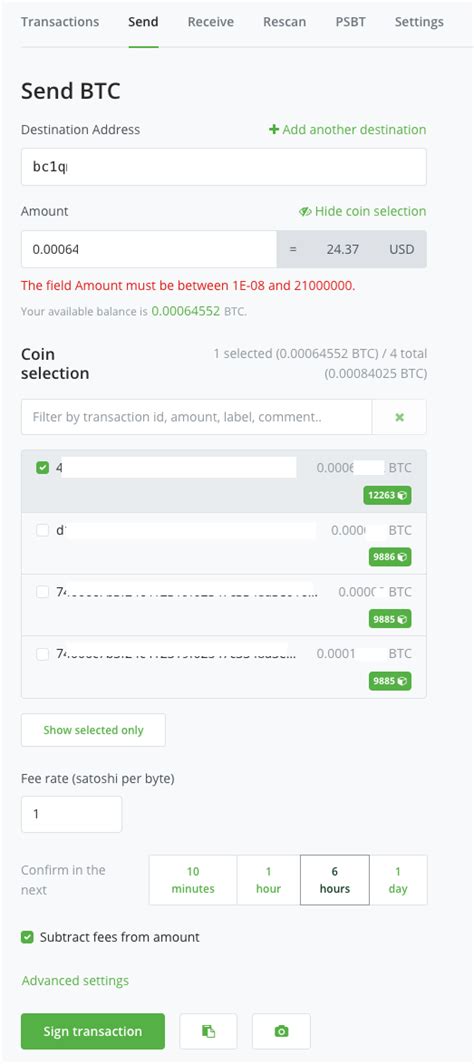Finding Elegant Solutions for PSBT Multi-Sig Signatures
As Bitcoin developers, we often encounter complex problems when working with private signatures (PSBT) and multi-signature wallets. One of the most difficult aspects of PSBT signatures is understanding how the process works internally. In this article, we will delve into the complexities of PSBT multi-sig signatures and explore some elegant solutions to help you overcome these hurdles.
The Basics: PSBT Signatures
Before we get into the finer points, let’s quickly recap what a private signature (PSBT) is. A PSBT is a binary format used to store Bitcoin transactions in a single file. It consists of three main components:
- Header: The first 40 bytes of the PSBT contain metadata such as block height, time, and hash of the previous block.
- Signature: The next 256 bytes are the actual signature, which is calculated using the sender’s public key.
- Data: The last part of the PSBT contains data from the transaction.
Multi-Sig Signing: A Multi-Party Process
In a multi-sig wallet, multiple parties (signers) contribute their private keys to reach consensus on a Bitcoin transaction. The process includes:
- Key Generation: Each signer generates a unique private key for the transaction.
- Public Key Compromise: Signer B shares his public key with Signer A, who then calculates the signature using Signer B’s public key.
- Verification: Signer A verifies the signature using the header and previous block hash.
- Block reward: If the verification is successful, signer A receives a block reward (2.5 BTC).
Challenges in PSBT Multi-Sig Signing
There are several challenges when working with PSBT Multi-Sig Signing:
- Computational complexity
: Signing a PSBT requires a significant amount of computational power, making it impossible to do manually.
- Signature verification

: Verifying the signature against the header and previous block hash is computationally intensive and requires specialized hardware or software.
- Private key management: Managing multiple private keys for different signers can lead to issues with key synchronization, locking, and rotation.
Elegant Solutions: Advanced Techniques and Tools
To address these challenges, several advanced techniques and tools have been developed:
- Public-Private Key Cryptography (PPKC): This approach uses a combination of public-key cryptography and private-key-based multi-sig signatures to achieve secure signing and verification.
- Zero-Knowledge Proofs (ZKPs): ZKPs allow parties to prove their knowledge without revealing the underlying data, making them useful for efficient signature schemes such as PSBT multi-sig signatures.
- Hybrid Signatures: Hybrid signatures combine public-key cryptography with private-key-based signatures, enabling efficient verification while maintaining security.
Recommended tools and resources
To simplify the process of implementing PSBT multi-sig signatures, you should use the following tools and resources:
- Zero-Knowledge-Signed Wallets (zkWallets): Software like Ledger Live or Trezor’s Wallet allow you to sign PSBT transactions with a single click and leverage ZKPs for efficient verification.
- PPKC Frameworks: Libraries like BIP32 or Sigil provide a framework for implementing PPKC in your software stack.
- Online Signatures and Verification Tools: Platforms like Blockchain.com or SignerHub offer online signatures and verification services, simplifying the process of verifying PSBT transactions.
Conclusion
Implementing a PSBT multi-sig signature can be complex, but with the right tools and techniques, you can overcome these challenges. By exploring advanced solutions such as PPKC, ZKPs and hybrid signatures, you can create efficient and secure private key management systems.

